The 2008 MLB draft was supposed to be loaded, with a very strong 2007 collegiate national team placing seven guys in the top three rounds and what seemed like a solid crop of high school position players as well. It hasn't worked out that way, with only one true superstar coming out of this draft class, a couple of very solid every-day players, and just one consistent major league starting pitcher -- who was drafted in the 25th round.
This re-draft is based on two major criteria: the players' careers to date and my projections of value they still have to offer (though the list does include players whose careers are likely over). I did not account for signability at the time, nor did I consider a team's preference for high school or college players, pitchers versus position players, etc. In other words, this analysis is based purely on talent. The first overall pick from 2008, prep shortstop Tim Beckham, did not make the list of the top 30 players from the draft crop; he will lead off my look at the 2008 draft first-round misses. (By the way, you can see my past re-drafts for 2006, 2005, 2004, 2003 and 2002 as well.)
This ranking includes only players who were drafted and signed in 2008. That means some well-known major leaguers, such as Anthony Rendon, Jason Kipnis, George Springer and Gerrit Cole, who were drafted that year but didn't sign, aren't eligible for this list. Their day will come.
On to the re-drafted first round of the 2008 draft:
 1. Buster Posey, C
1. Buster Posey, C
Florida State
39.5 career WAR
Posey nearly went first overall -- the Rays were down to him or Tim Beckham, and when they took the high school player, Posey went second ... no, wait, he went fourth ... no, that's still not right. He went fifth. Posey hit .463/.566/.879 for Florida State and won the Golden Spikes Award in 2008, and was a catcher -- he'd been a shortstop and reliever as a freshman before moving behind the plate full time his sophomore year -- but somehow wasn't the first college player taken or selected in the top four picks. I think it's fair to say this draft changed the future of multiple franchises, none more so than the Giants, because...
Posey’s actual draft spot: first round, No. 5 overall (Giants)
Rays’ actual 2008 pick: Tim Beckham, SS, Griffin (GA) HS
 2. Brandon Crawford, SS
2. Brandon Crawford, SS
UCLA
21.1 career WAR
... the two most productive players from the class, by Baseball-Reference's WAR and I think any reasonable measure of production, were both Giants selections. Crawford was a defensive star as an amateur but there were legitimate questions about whether he'd hit, as he didn't hit for much average at UCLA and struck out quite often for that era.
What he has done, however, is come into just enough power to turn in a few years as an above-average hitter for a shortstop who has topped 2.0 WAR in all six of his seasons as a regular -- even with poor OBP skills (.316 career in the majors, .307 if you delete all his intentional walks from batting eighth). The Giants' 2008 draft produced eight big leaguers in total, including Conor Gillaspie, Eric Surkamp and Juan Perez, but these two were the cream of that crop.
Crawford’s actual draft spot: fourth round, No. 117 overall (Giants)
Pirates’ actual 2008 pick: Pedro Alvarez, 3B, Vanderbilt
 3. Eric Hosmer 1B
3. Eric Hosmer 1B
American Heritage School (FL)
15.6 career WAR
Hosmer's career in Kansas City was capped with a world championship, but I don't think he ever turned into the player he was supposed to become out of high school when he projected to hit for average and power while providing plus defense to warrant becoming the rare prep first baseman taken in the first round.
Hosmer played first and pitched in high school, with right field a possibility had the Royals wanted to explore moving him. After an injury-wrecked first full year, he had laser eye surgery and destroyed the minors for 700 PA, hitting .354/.426/.573 across the top three levels of the Royals' system before his debut.
His last season in blue was his best, but he had three below-average seasons mixed in as well, and ended up a solid pick for the Royals rather than a franchise-altering one.
Hosmer’s actual draft spot: first round, No. 3 overall (Royals)
Royals’ actual 2008 draft pick: Hosmer
 4. Craig Kimbrel, RHP
4. Craig Kimbrel, RHP
Wallace State CC
19.0 career WAR
Atlanta drafted Kimbrel twice from Wallace State Community College, betting on the upside of his power arm despite an unusual delivery and lack of control.
In pro ball, he was just as wild, walking 39 in 39 innings across high-A, Double-A and Triple-A in 2009, then walking 16 more in 10 innings in the Arizona Fall League.
But the Braves’ bet paid off. Kimbrel’s strikeout rates in the majors were elite from the start, and by 2012 he’d improved his control to the point that he walked just 14 men in 62.2 innings. He also has been a huge anomaly among power relievers, staying mostly healthy across his career, with 50-plus innings in seven straight seasons in the majors. I rarely rank relievers highly in re-drafts, given how combustible they are as a group, but this draft class is that bad and Kimbrel is just that good.
Kimbrel’s actual draft spot: third round, No. 96 overall (Braves)
Orioles’ actual 2008 draft pick: Brian Matusz, LHP, San Diego
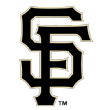 5. Charlie Blackmon, OF
5. Charlie Blackmon, OF
Georgia Tech
16.1 career WAR
Blackmon lasting as long into the draft as he did seems strange in hindsight -- which, after all, is what this article is about. He hit .396/.469/.564 that spring for Georgia Tech, a premier program in a premier conference. That was Blackmon's first year as a hitter, however, and he was a senior, turning 21 a few weeks after the draft, without the wood-bat experience of the Cape Cod League or on Team USA that scouts typically want to see for college position players. He was a plus runner with some pop and rarely struck out, which should have been a huge positive marker for a player with almost no experience as a hitter.
His major league career has been solid, boosted by his home park (he's a career .267/.317/.443 away from Coors Field), which is why his WAR total may be less than you'd expect from someone with his huge stat lines the past two seasons.
Blackmon’s actual draft spot: second round, No. 72 overall (Rockies)
Giants’ actual 2008 draft pick: Buster Posey, C, Florida State
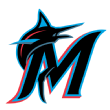 6. Tanner Roark, RHP
6. Tanner Roark, RHP
14.7 career WAR
Roark might be the 2008 draft's best story. He flunked out of the University of Illinois after going undrafted his junior year, went to pitch in the independent Frontier League, then gave up 25 runs in 9.2 innings there across three starts. Yet he still had his name called by the Rangers in the 25th round, as area scout Derek Lee (now with Oakland) was willing to take a chance on him despite his up-and-down history. He got better, as the man who used to be a newt would say, and eventually went to Washington in a trade for Cristian Guzman. Roark has never had a big fastball, but he has succeeded with great command and a plus changeup, the sort of profile that should help him pitch into his mid-30s even if his fastball dips below average.
Roark’s actual draft spot: 25th round, No. 753 overall (Rangers)
Marlins’ actual 2008 draft pick: Kyle Skipworth, Patriot (CA) HS
 7. Josh Harrison, INF
7. Josh Harrison, INF
Cincinnati
13.8 career WAR
Harrison's 2014 season was a big outlier, but he has proved himself to be a consistently valuable multiposition player -- more than a utility guy but less than a regular -- over the rest of his career. Overlooked out of the University of Cincinnati despite hitting .378/.437/.559 as a junior and walking more than he struck out in all three years with the Bearcats, the 5-foot-8 Harrison slid to the sixth round, where he was drafted by the Cubs and their current assistant scouting director Lukas McKnight.
Harrison’s actual draft spot: sixth round, No. 191 overall (Cubs)
Reds’ actual 2008 draft pick: Yonder Alonso, 1B, Miami
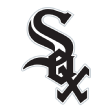 8. Lance Lynn, RHP
8. Lance Lynn, RHP
Ole Miss
13.5 career WAR
Lynn really should have gone in the first round. He was a successful starter in the SEC for three years who also had pitched for Team USA. His awful start this year notwithstanding, he has been consistently productive around Tommy John surgery in 2016. I had him ranked 23rd on my draft board, but before you think I'm bragging, the guy I ranked 24th, Shooter Hunt, lost the strike zone after signing and walked more than a man an inning before he was released in 2011.
Lynn’s actual draft spot: first round (supplemental), No. 39 overall
White Sox’s actual 2008 draft pick: Gordon Beckham, SS, Georgia
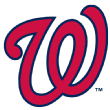 9. Logan Forsythe, 3B
9. Logan Forsythe, 3B
Arkansas
12.5 career WAR
There's a longstanding bias against college second basemen in the draft -- not without reason, since it's unusual for a prospect at that age to already have moved off short -- which may have hurt Forsythe, along with a swing that, at the time, was much more geared toward contact than power.
He did hit well for three years at Arkansas and played for Team USA the summer before, and posted solid OBPs everywhere he played in the minors. There also was a lot of talk around when he was drafted and after he signed that he'd be a good player to convert to catching, but that never came to pass.
Forsythe’s actual draft spot: first round (supplemental), No. 46 overall (Padres)
Nationals’ actual 2008 draft pick: Aaron Crow, RHP, Missouri
 10. Alex Avila, C
10. Alex Avila, C
Alabama
14.4 career WAR
Avila hit .295/.389/.506 in 2011 with 19 homers, producing a third of his total career value that year, but has settled in as a solid backup-level player since 2013, showing some pop and patience with low averages.
The University of Alabama product could play well into his 30s between those secondary skills and his abilities behind the plate, someone you sign to back up your regular and hope you get one of his better BABIP years.
Avila’s actual draft spot: fifth round, No. 163 overall (Tigers)
Astros’ actual selection: Jason Castro, C, Stanford
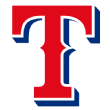 11. Dee Gordon, SS
11. Dee Gordon, SS
Southeastern
11.2 career WAR
Gordon fell to the fourth round despite his huge speed and bloodlines because scouts really hadn't seen him play much baseball. He focused on basketball in high school, only playing baseball regularly as a senior. He then spent a year at NAIA Southeastern University (stealing 45 bases that season) before transferring to Seminole State Junior College, where he didn't qualify academically to play in the spring of 2008.
The Dodgers' farm director at the time, DeJon Watson, had been roommates with Tom Gordon, Dee's father, in the minor leagues, so L.A. had insight on Dee that other clubs lacked. Gordon remains Southeastern's only big leaguer to date.
Gordon’s actual draft spot: fourth round, No. 127 (Dodgers)
Rangers’ actual 2008 draft pick: Justin Smoak, 1B, South Carolina
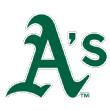 12. Brett Lawrie, C/2B
12. Brett Lawrie, C/2B
Brookswood (Canada) Secondary School
15.1 career WAR
Lawrie was a bat without a position in high school, and it wasn't for lack of effort -- he tried catching and second base, among other spots, looking comfortable nowhere but in the batter's box. Even that wasn't always a sure thing, as he struggled badly at the high-profile Area Code Games showcase the summer before the draft, eventually going off with Team Canada in the spring to launch himself into the first round.
Lawrie has been out of baseball since 2016 even though he's only 28 -- he could certainly try a comeback, but a lack of offensive production and clashes with coaching staffs in multiple organizations seem to have led to him wearing out his welcome.
Lawrie’s actual draft spot: first round, No. 16 overall (Brewers)
A’s actual 2008 draft pick: Jemile Weeks, 2B, Miami
 13. Jason Castro, C
13. Jason Castro, C
Stanford
11.3 career WAR
I remember the criticism of this pick at the time, including people asking if Bobby Heck, then the Astros' scouting director, was "trying to get fired" by taking the low-ceiling Castro with the No. 10 pick. The Stanford product had the misfortune to play on the same Cape Cod League team as Posey, and thus didn't catch much the summer before the draft.
The pick has aged well, however, as Castro developed late into a very good defensive catcher who has some OBP skills and a little pop, enough for a 2.5 WAR season in his first year with the Twins in 2017. He seems like the sort of backstop who could play into his late 30s as a backup and still tack on another half-win a year even when he loses his starting role.
Castro’s actual draft spot: first round, No. 10 overall (Astros)
Cardinals’ actual 2018 draft pick: Brett Wallace, 3B, Arizona State
 14. Jake Odorizzi, RHP
14. Jake Odorizzi, RHP
Highland (IL) HS
8.7 career WAR
Odorizzi was drafted by the Brewers, traded to the Royals for Zack Greinke, traded to the Rays for James Shields and Wade Davis, and then traded to the Twins this winter for prospect Jermaine Palacios.
A two-sport star in high school who also played wide receiver, Odorizzi just turned 28 this spring and should have several more years of starting ahead of him to continue to add to his career production.
Odorizzi’s actual draft spot: first round (supplemental), No. 32 overall (Brewers)
Twins’ actual 2008 draft pick: Aaron Hicks, OF, Wilson (CA) HS
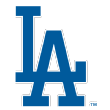 15. Aaron Hicks, OF
15. Aaron Hicks, OF
Wilson (CA) HS
6.4 career WAR
Hicks was a real two-way prospect in high school, low to mid-90s off the mound, with power and speed as a position player. His path to major-league-regular status was as up and down as you'll find -- he seemed to alternate breakthrough years with stagnant or disappointing ones, so the Twins eventually traded him to the Yankees for J.R. Murphy, only to see Hicks break out with a nearly 4-WAR season in the Bronx in 2017. He's still just 28, too often hurt, and has yet to see 400 PA in any major league season, which, if you're a believer in Hicks' skills (as I am), might mean he's got more upside left in his career than most position players on this list.
Hicks’ actual draft spot: first round, No. 14 overall (Twins)
Dodgers’ actual 2008 draft pick: Ethan Martin, RHP, Stephens County (GA) HS
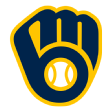 16. Tyler Chatwood, RHP
16. Tyler Chatwood, RHP
Redlands East Valley (CA) HS
10.2 career WAR
Chatwood had "the curveball from hell," as the Angels' then-scouting director Eddie Bane called it, and has found some success in the majors despite a bad delivery and lots of injuries. He has still never thrown 160 innings in any pro season, but he kept the ball down and in the park during most of his time with the Rockies before signing with the Cubs during the offseason.
Chatwood’s actual draft spot: second round, No. 74 overall (Angels)
Brewers’ actual 2008 draft pick: Brett Lawrie, C, Brookswood (Canada) Secondary School
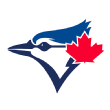 17. Wade Miley, LHP
17. Wade Miley, LHP
Southeastern Louisiana
8.0 career WAR
Miley was a fairly consistent back-end starter, maybe a No. 4 but definitely below average, until he got to Baltimore, where he turned into some sort of Triple-A journeyman. He pitched at Southeast Louisiana University, but I think he established himself as a top-50 pick the summer before with a strong showing in the Cape Cod League.
Miley’s actual draft spot: first round (supplemental), No. 43 overall (Diamondbacks)
Blue Jays’ actual 2008 draft pick: David Cooper, 1B, Cal

18. Lonnie Chisenhall, INF
Pitt CC
8.7 career WAR
Chisenhall was kicked out of South Carolina for theft after his freshman year, transferred to Pitt Community College in North Carolina and mashed his way into the very back of the first round, where the Indians rolled the dice on him despite the enormous makeup questions. He has made himself a competent right fielder but has never hit left-handed pitching well enough to truly become an every-day player, despite one of the prettier swings you'll see.
Chisenhall’s actual draft spot: first round, No. 29 overall (Indians)
Mets’ actual 2008 draft pick: Ike Davis, 1B, Arizona State
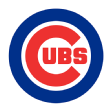 19. Andrew Cashner, RHP
19. Andrew Cashner, RHP
TCU
8.3 career WAR
Cashner was a closer at TCU for one year, was drafted in the first round by the Cubs, and didn't reach the majors for good until after he was traded to the Padres for Anthony Rizzo in an absolute disaster of a deal for San Diego.
Cashner has never made 30 starts or thrown 190 innings in a season -- although his two healthiest years came in San Diego -- and has been below average since 2015, although there's enough stuff left here for him to be a fifth starter or, perhaps, return to a relief role, where I think he'd miss more bats.
Cashner’s actual draft spot: first round, No. 19 (Cubs)
Cubs’ actual 2008 draft pick: Cashner

20. Yonder Alonso, 1B
Miami
7.6 career WAR
Alonso, drafted by the Reds out of the University of Miami, has settled in to a nice career as a platoon first baseman, boosted a little by a career high in homers in 2017 (join the club). But he has still never posted a two-WAR season and hasn’t found enough production against lefties (.231/.300/.354 career) to be a true every-day player.
Alonso’s actual draft spot: first round, No. 7 overall (Reds)
Mariners’ actual 2008 draft pick: Josh Fields, RHP, Georgia
 21. Danny Espinosa, 2B
21. Danny Espinosa, 2B
Long Beach State
7.6 career WAR
Espinosa generated most of his value over two seasons (2011 and 2012) when he played every day with above-average defense at second, above-average power and showed a propensity to get hit by pitches. He produced just 2.6 total WAR post-2012, and after a huge July 2016 weekend at Cincinnati, where he hit five homers in four games thanks to a small ballpark and the Reds' pitchers, he hit a composite .175/.257/.276 for the rest of his career. He signed a minor league deal with the Dodgers earlier this week.
Espinosa’s actual draft spot: third round, No. 87 overall (Nationals)
Tigers’ actual 2008 draft pick: Ryan Perry, RHP, Arizona

22. Collin McHugh, RHP
Berry College
7.3 career WAR
McHugh pitched at Berry College, a small Division III school in Georgia that was still in the NAIA in 2008, where coach David Beasley took a shining to McHugh right away. McHugh lasted until the 18th round, when Marlin McPhail, then an area scout with the Mets and now a cross-checker, drafted him. McPhail recalls that McHugh "knew what he was doing, was intelligent, with feel for his off-speed stuff and pitchability."
McHugh was a month shy of 21 at the draft but didn't have much projection, so McPhail was betting that McHugh's command and feel would allow him to succeed even if he was sitting at 90-91 -- which is what McHugh has done as a big league starter, only seeing an uptick this year now that he's a full-time reliever.
McHugh’s actual draft spot: 18th round, No. 554 overall (Mets)
Mets’ actual 2008 draft pick: Reese Havens, SS, South Carolina

23. Jordy Mercer, SS
Oklahoma State
7.2 career WAR
Mercer is a below-average hitter and a below-average defensive shortstop, but he's an above-average hitter for a shortstop, which is worth something. He played three years at Oklahoma State but hit over .300 only in his junior year, hitting more homers that spring than in his freshman and sophomore years combined.
Mercer’s actual draft spot: third round, No. 79 overall (Pirates)
Padres’ actual 2008 draft pick: Allan Dykstra, 1B, Wake Forest

24. Pedro Alvarez, 3B
Vanderbilt
6.8 career WAR
I never understood the hype on Alvarez, who certainly had power but didn't hit lefties while at Vanderbilt or hit well on Friday nights (against opponents' best starters) and had trouble defensively at third. The upside was evident, but the risk was there too.
As it turned out, he was just like all the other college corner infielders from that first round -- good enough to get to the majors, not good enough to be a regular. The Pirates took him second overall, passing on Posey and Hosmer.
Alvarez’s actual draft spot: first round, No. 2 overall (Pirates)
Phillies’ actual 2008 draft pick: Anthony Hewitt, SS, Salisbury School (NY)

25. Justin Smoak, 1B
South Carolina
5.1 career WAR
Smoak was my favorite among the huge group of college first basemen in this draft class, which included Alonso, Ike Davis (who later tried converting to the mound), David Cooper, Brett Wallace and Allan Dykstra, all of whom went in the first round but, as you can see, none of whom has reached 10 WAR yet.
Smoak and Alonso are the only ones still going, with Alonso holding a solid edge so far in production, but Smoak coming off a career .270/.355/.529, 3.2 WAR year in 2017. Also, I just wanted to call back to the time an Arizona Fall League PA announcer introduced him as Justin "SMOH-ack."
Smoak’s actual draft spot: first round, No. 11 overall (Rangers)
Rockies’ actual 2008 draft pick: Christian Friedrich, LHP, Eastern Kentucky
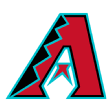 26. Mike Montgomery, LHP
26. Mike Montgomery, LHP
Hart (CA) HS
4.9 career WAR
Montgomery seemed like a perfect projection lefty, given his height, fairly easy delivery and a big, slow curveball that seemed like it would be plus as his arm sped up. He did gain velocity when he moved to the bullpen and ended up with a plus changeup, but that breaking ball never really came along as expected and he has been way more effective in relief than as a starter (2.54 ERA as a reliever, 4.20 as a starter). He's 28, left-handed and doesn't show much of a platoon split, so he could have a long tail to his career as a swingman/long reliever.
Montgomery’s actual draft spot: first round (supplemental), No. 36 overall (Royals)
Diamondbacks’ actual 2008 draft pick: Daniel Schlereth, LHP, Arizona
 27. Tyson Ross, RHP
27. Tyson Ross, RHP
Cal
6.9 career WAR
Ross has had two full, healthy seasons in pro ball, and in one of them he led his league in walks. With a delivery reminiscent of the swinging of a gate, Ross has had constant arm problems but flashes premium stuff during his occasional bouts of good health, which has been the case so far this year.
The A's gambled on big college arms in this draft: In the seventh round, they took Pepperdine's Brett Hunter, who would hit 100 when healthy, which was almost never. Hunter walked more than a man an inning in his first year in pro ball and kicked around the A's system until 2013, but pitched in just two games in Triple-A.
Ross’ actual draft spot: second round, No. 58 overall (A’s)
Twins’ actual 2008 draft pick: Carlos Gutierrez, RHP, Miami
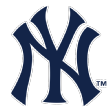 28. Nathan Eovaldi, RHP
28. Nathan Eovaldi, RHP
Alvin (TX) HS
7.5 career WAR
Eovaldi, when healthy, threw very hard, even as a 20-year-old prospect in the Dodgers' system, but hitters can square up the ol' straight-ball, and he never found any kind of consistent breaking pitch to go with that huge velocity. His last major league appearance before a catastrophic elbow injury was Aug. 10, 2016. He threw one inning on May 4 of this year in high-A, his first in any game since he had Tommy John surgery.
Eovaldi’s actual draft spot: 11th round, No. 337 overall (Dodgers)
Yankees’ actual 2008 draft pick: Gerrit Cole, RHP, Orange Lutheran (CA) HS
 29. Brad Brach, RHP
29. Brad Brach, RHP
Monmouth
6.1 career WAR
Brach's WAR here doesn't really reflect his peripherals -- he certainly benefited from some great Orioles defense and good luck in his brief 2015-16 peak -- but a 42nd-rounder turning out to be a big leaguer with any value is a hugely successful draft pick.
Jim Bretz, then an area scout for the Padres, saw Brach as a senior at Monmouth University in New Jersey and signed the right-hander for a whopping $1,000 as a "senior sign," a pitcher taken to fill out minor league rosters.
"He just threw strikes after strikes, with three pitches," he recalled to me this week. "He was aggressive as hell and challenged guys. Plus he had the right mentality. When I went to give him his $1,000 and told him, 'it's only a thousand dollars, but it's an opportunity,' he said, 'Well, why can't it be me who goes to the big leagues?'"
Brach later caught the eye of then-Padres manager Bud Black while throwing a bullpen in spring training, and appeared in one major league spring game the following March despite never throwing above the Arizona Rookie League the year he signed. The Padres later traded him for Devin Jones, who posted a 7.23 ERA in 37.1 innings in his only year in the San Diego organization, while Brach has produced all of his positive major league value for Baltimore.
Brach’s actual draft spot: 42nd round, No. 1,275 overall (Padres)
Indians’ actual 2008 draft pick: Lonnie Chisenhall, SS, Pitt CC
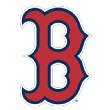 30. Bryan Shaw, RHP
30. Bryan Shaw, RHP
Long Beach State
6.1 career WAR
Shaw is the rare college reliever who worked out as a reliever in the majors, never making a start in three years at Long Beach State. He struggled in the Diamondbacks’ misguided attempt to make him a starter in 2009-10, then rolled out six straight above-replacement-level seasons from 2012 to 2017 as a big league reliever. He was comfortably above league average in three of those years, and while he's off to a rough start to his three-year deal with the Rockies, he's in good company among pitchers who have found it hard to pitch at that altitude.
Shaw’s actual draft spot: second round, No. 73 overall (Diamondbacks)
Red Sox’s actual 2008 draft pick: Casey Kelly, RHP, Sarasota (FL) HS
